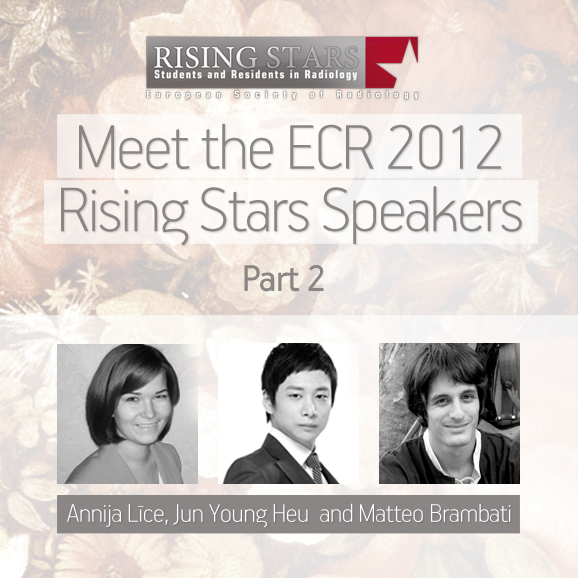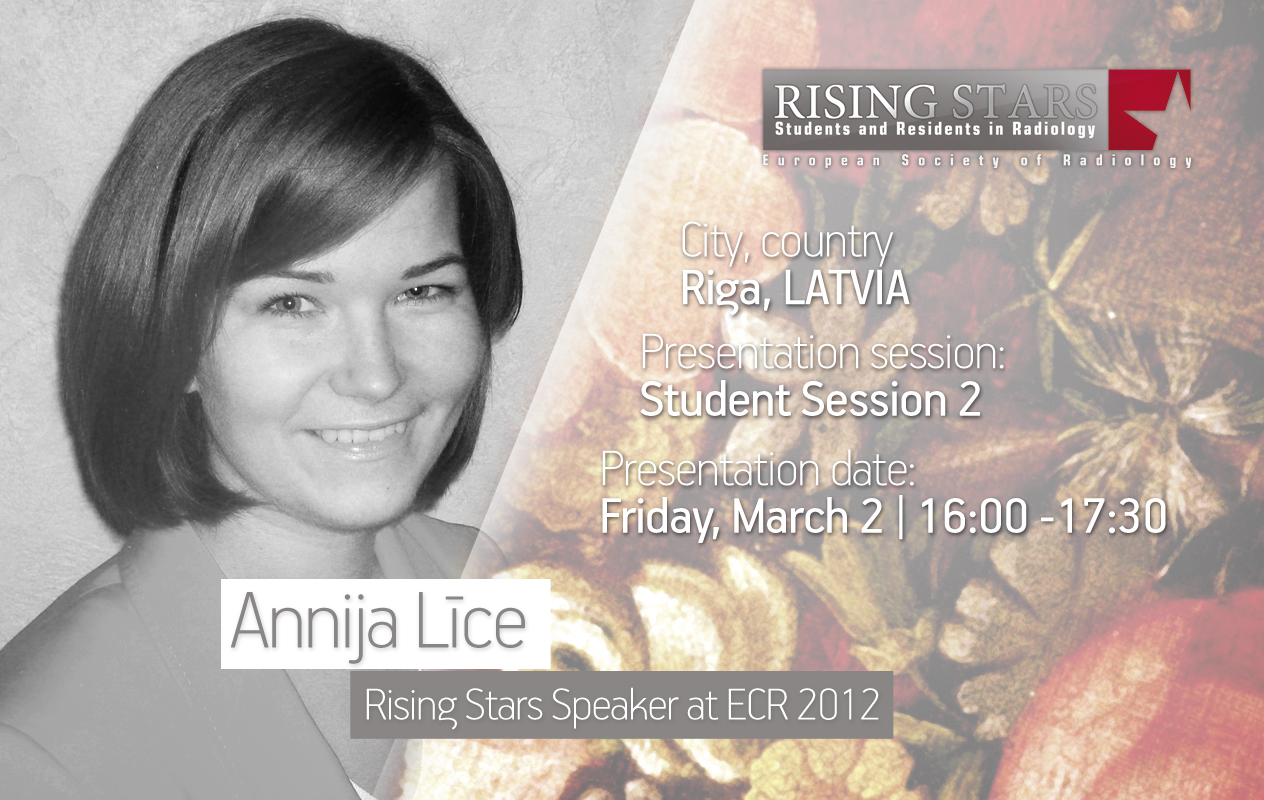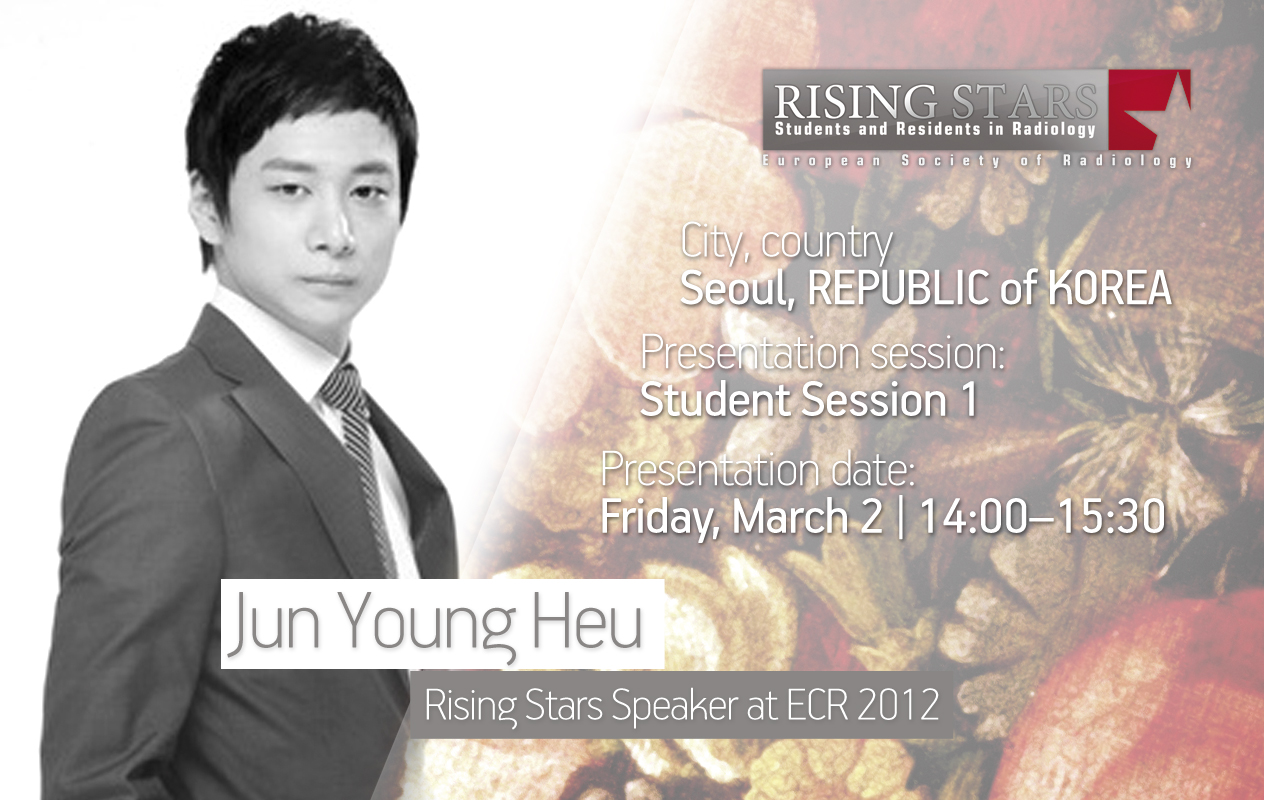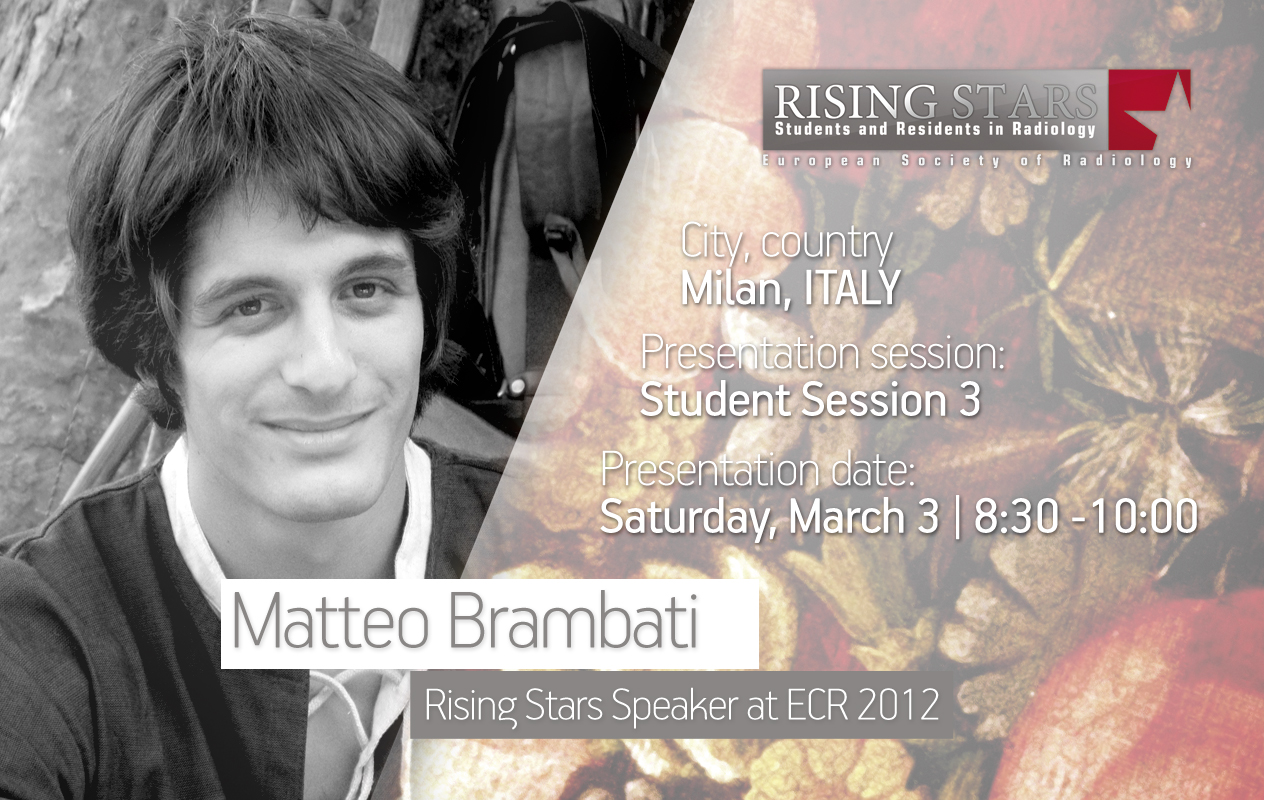ESR Rising Stars Speakers at ECR 2012
Here we continue our series introducing our Rising Stars, who submitted the best student abstracts and have been invited to present their work at ECR 2012 in front of a real congress audience. Each speaker will be announced individually on the Rising Stars Facebook page, with a more detailed look, including their full abstracts, here on the ESR Blog. Our next three speakers are Annija Lice, Jun Young Heu and Matteo Brambati:

ECR 2012:
Student Session 2 | March 2, 16:00 – 17:30
CV: (excerpt)
Education/Profession:
Since 2009 Student at Riga Stradins University (RSU), medical faculty, Latvia
Extracurricular activities:
Since 2010 Member of Latvian Medical Students’ Associciation (LaMSA)
Abstract:
Today we are tallking about chemical medicine, but the key word for the future of medicine will be biological. The purpose of this abstract is to give you a view of potenial future methods of therapy. Prophylaxis: Medicine will cooperate with other disciplines of human study, for example, astrology. This will lead to better research of potential future diseases for a newborn, so every child will receive a prophylactic recommendation about diet, physical activities, the best environment and the best medicine to use. There will be a confluence of Eastern and traditional medicine: Fengshui in psychiatry, colour therapy in oncology and aroma therapy in pulmonology. Dream registration and analysis by a dream psychologist will reveal traumas and complexes. Diagnostics: Every person will be measured not only as a combination of organs, tissues and cells, but in much more detail – at the molecular level. Methods will become less invasive: There will be devices which can detect every specific smell from the patient’s body –mouth, sweat, urine, feaces, sputum – and offer a diagnosis. Research of water crystal changes after contact with a patient could detect microscopic changes in body liquids caused by different diseases. Treatment: Homeopathy will become more widely recognised. Specially modified plants will be used as their leaves will be full of medicine, so no pharmacies will be needed. Cell and tissue banks will become more developed and organ growing will emerge in the near future. Gene engineering will discover cures for otherwise incurable diseases. Conclusion: Doctors will analyse a patient in a much more delicate way; therapy will be based on energies and vibrations; mechanisms will become more elegant; Key words: Development of mechanisms, non-traditional medicine, body energies.
ECR 2012:
Student Session 1 | March2, 14:00 – 15:30
CV: (excerpt)
Education/Profession:
College of Medicine, Chung-Ang University – Seoul, Republic of Korea
Extracurricular activities:
2006 – General Aiffairs Manager of Chung-Ang University College of Medicine Pre-Med Student Council
Member of “Orpheus” – College of Medicine Orchestra
Abstract:
X-ray, ultrasonography, CT, and MRI are radiological tools which physicians have used to diagnose diseases in patients. Back when diagnoses were made through surgery and dissection, a skilled physician would have made a diagnosis depending on symptoms, observations, and tactile perception. The development of other radiological technologies has emphasised the cost-benefit associated with the reliability of a diagnosis compared with the effects of the procedure. Numerous scientists have made considerable efforts to defeat cancer. In the future, nanomedicine combined with robotic science, i.e., nanobots, will be used in periodic health examinations to detect and automatically analyse or report microscopic problems in the human body. Nanobots will serve as a strategic monitoring system for those who are at high risk of developing a certain disease. After cancer patients achieve complete remission, more delicate nanobots will provide information about even infinitesimal cancerous lesions so as to preempt recurrence. Today, cancer patients suffer side-effects from the systemic cellular impact of anticancer drugs. However, in the future, anti-cancer drugs will be designed such that their effects are localised to the cancer without affecting healthy cells. Nanobots will provide extremely detailed anatomic information about a target lesion and will serve as a surveillance system for drug level and efficacy. It is fascinating to imagine what the evolution of medical devices and procedures could do to prevent patients from developing diseases such as cancer. Although nanobots will need to be extremely sensitive and specific, the road leading to the defeat of cancer will be unyielding with the help of robotic science.
ECR 2012:
Student Session 3 | March 3, 8:30 – 10:00
CV: (excerpt)
Education/Profession:
Since 2007 Università degli Studi di Milano, faculty of medicine and surgery – Milan, Italy
Abstract:
Dear Matteo, do you remember me? Well, I am you, twenty years in the future! As you can imagine it is hard to figure out what you might become in the next twenty years. I am writing to you in order to try and help you address some issues that will arise in your future profession. Do you remember your first radiology lesson? In the Seventies, computed tomography was considered to be the most innovative technique available and in 1979 Godfrey N. Hounsfield and Allan M. Cormack won the Nobel Prize in Medicine for that idea. Only two years later, Peter Mansfield started using nuclear magnetic resonance to identify pathological processes in the human body. In 2003, the Nobel Prize in Medicine was awarded to Peter Mansfield and Paul Lauterbur. In the next twenty years, you will see further improvements in diagnostic imaging, derived from future discoveries in physics. A new revolution in physics is going to occur with the discovery that neutrinos are faster than light. Despite these technological innovations, what should you always remember above all? The patient and his health are the core of your business. You must remember that although industrial research will produce more powerful machines and fantastic new images, the observation and rational assessment of a physician cannot be replaced. Contact with the patient must always be kept alive, as this kind of relationship could focus your attention on some specific signs that are undetectable with any exam. Even if you become a famous radiologist, never forget the importance of talking and listening to a patient. I know that all your dreams will become reality. Matteo






check this link, chanel bags outlet , just clicks away